The mid-size sedan isn’t the default family hauler anymore, but it’s still a pleasant means of transportation for singles or the family, especially when it comes from a luxury brand. Mid-size cars don’t have the space of SUVs, but they’re more fun to drive, more efficient, and still quite practical.
The 2023 Acura TLX and 2023 Lexus ES are both based on front-wheel-drive platforms and they sit below rear-drive-based luxury stalwarts from Audi, BMW, and Mercedes-Benz in price and market position. Still, they both deliver luxury and satisfying road manners but with better value.
We find a lot to like in both cars, but which is the better choice?
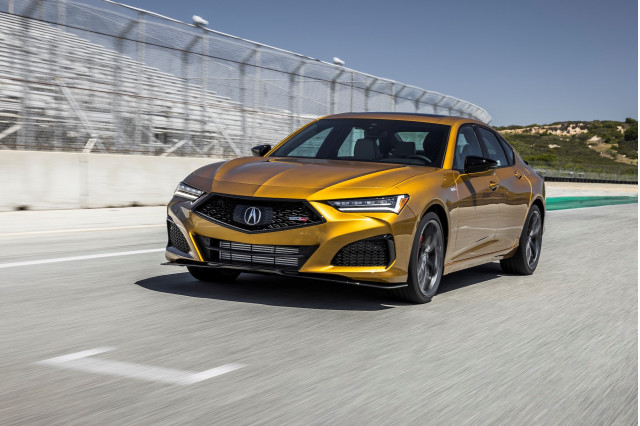
2023 Acura TLX

2023 Acura TLX
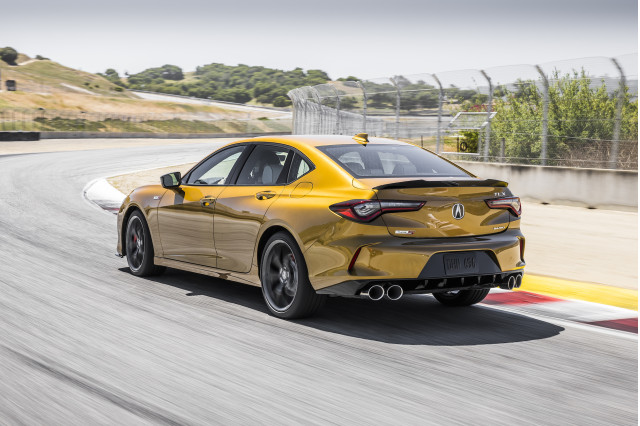
2023 Acura TLX
TLX vs. ES prices and features
Base TLX costs about $41,000
Base ES costs about $43,000
Recommendations: TLX SH-AWD A-Spec and ES 350/300h Luxury
How much is an Acura TLX?
The TLX is offered as a front-wheel-drive base model with available Technology or A-Spec packages, an SH-AWD all-wheel-drive model that comes with either A-Spec or Advance packages, and a Type S model with an available Performance Wheel and Tire package.
Pricing for the front-drive base model starts at about $41,000. Standard features include 12-way power-adjustable and heated front sport seats, synthetic leather upholstery, a 7.0-inch digital information display, a 10.5-inch infotainment screen, navigation, a wifi hotspot, Apple CarPlay and Android Auto, a 10-speaker audio system, ambient interior lighting, a sunroof, LED headlights and taillights, and 18-inch alloy wheels. The standard warranty is 4 years or 50,000 miles with 2 years or 24,000 miles of scheduled maintenance.
We recommend an AWD TLX with the A-Spec Package for about $50,000. It comes with leather upholstery, blind-spot monitors, rear cross-traffic alerts, front and rear parking sensors, real-time traffic and a 3D view for the navigation system, a 17-speaker ELS audio system, wireless smartphone charging, Milano leather and synthetic suede upholstery, cooled front seats, a flat-bottom steering wheel, LED fog lights, a decklid lip spoiler, a sport appearance package, and 19-inch wheels.
We also wouldn’t blame buyers for moving up to the Advance Package for about $52,000. Its additional equipment consists of adaptive dampers, a head-up display, a surround-view camera system, 16-way power front seats covered in Milano leather, and heated outboard rear seats.
At the top of the lineup sits the roughly $57,000 Type S model, and it’s so fun we recommend it, too. It gets rev-matched downshifts, additional chassis bracing, Brembo 4-piston front brakes, a front splitter and rear diffuser, and the decklid spoiler and sport appearance package from the A-Spec Package. The wheel and tire package adds $1,000.
How much is the Lexus ES?
Lexus offers its mid-size sedan in ES 250, ES 300, and ES 300h models, with available base, Luxury, Ultra Luxury, F Sport Design, and F Sport Handling trim levels. Every model is backed by a 4-year/50,000-mile basic warranty with two free scheduled maintenance visits in the first year of ownership.
The base ES 250 with all-wheel drive and ES 350 with front-wheel drive cost about $43,000. They come standard with 10-way power-adjustable front seats covered in synthetic leather, an 8.0-inch infotainment screen with navigation, wireless Apple CarPlay and Android Auto, a wifi hotspot, a 10-speaker audio system, LED headlights and taillights, and 17-inch alloy wheels. The ES 350 also has a sunroof, and as does the base ES 300h, which costs almost $44,000.
The ES 250 powertrain is low on power, so we recommend moving up to the ES 350 or ES 300h and choosing the additional equipment of the Luxury trims that includes a 14-way power driver seat, semi-aniline leather upholstery, heated and cooled front seats, a power tilt/telescoping steering wheel, memory for the driver seat, wood interior trim, ambient lighting, a heated steering wheel, a wireless smartphone charger, sportier dampers, and 18-inch wheels. It costs about $48,000 for an ES 350 and close to $50,000 for an ES 300h.
We’d also be tempted by the F Sport Handling versions, which have adjustable dampers, a sport-tuned suspension, a sport appearance package, front sport seats, performance gauges, aluminum pedals, a rear spoiler, synthetic leather upholstery, and 19-inch wheels. They cost close to $50,000 for an ES 350 and close to $51,000 for an ES 300h.
At the top of the lineup, the ES 300h Ultra Luxury costs about $53,000 and adds a 12.3-inch infotainment screen, a hands-free trunklid, and a head-up display.
Advantage: A draw for similar values and pricing.
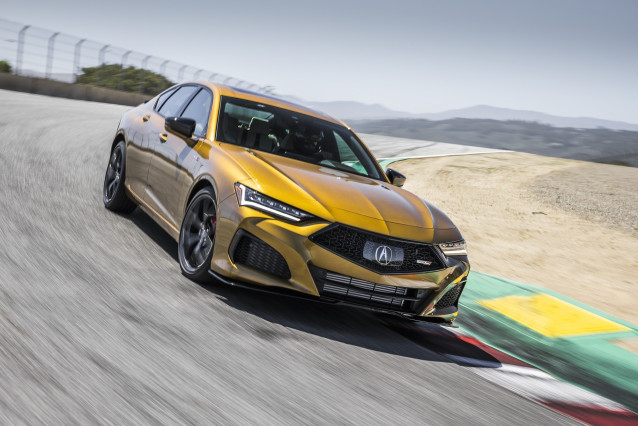
2023 Acura TLX
TLX vs. ES performance and all-wheel-drive systems
Is the Acura TLX AWD? How fast is the Acura TLX?
The TLX comes standard with a 2.0-liter turbo-4 that makes 272 hp. Power flows through a 10-speed automatic transmission to the front or all four wheels.
The turbo-4 is a strong engine that launches the TLX from 0-60 in about 5.9 seconds, and the transmission shifts responsively to keep power at the ready for highway passing.
Acura’s SH-AWD system goes beyond providing security in inclement weather. It can not only send 70% of the power from the front to the rear, but it can also apportion torque left to right on the rear axle and even overdrive the power to the outside wheel by 2.9% in a turn to help the car rotate.
Quick, well-weighted steering and firm but not harsh suspension settings give the TLX agile moves, especially for a car based on a front-wheel-drive platform, and a comfortable ride. It isn’t as balanced as some rear-drive-based rivals, but it also costs less.
The Type S model features a turbocharged 3.0-liter V-6 that ups the output to 355 hp and drops the 0-60 mph time to about 4.9 seconds.
Acura increases the steering heft of the Type S, gives it bigger brakes, and stiffens the body structure. It also comes with adaptive dampers and a sport suspension tune that conspire to flatten out the ride and create quicker chassis responses. Despite standard 20-inch wheels, the Type S doesn’t ride too firmly.
Is the Lexus ES AWD? How fast is the Lexus ES?
The ES’s power varies from substandard to decent to fairly strong.
The 2.5-liter 4-cylinder in the ES 250 models makes a very pedestrian 203 hp. Its 8.6-second 0-60 mph time is slow for a luxury car and average at best for any mid-size sedan. It’s too bad that it’s the only engine that comes with all-wheel drive, though we do like the smooth shifts of its 8-speed automatic transmission.
Stepping up to the ES 300h adds an electric motor to the 2.5-liter inline-4 that increases total output to a still-modest 215 hp. However, it has more mid-range torque and its 8.1-second 0-60 mph time is more acceptable, especially given how efficient it is. It uses a CVT that can slow down power delivery and make the engine drone on occasion.
ES 350 models have the most power. Their 302-hp V-6 provides smooth, ready power, a mild snarl, and a strong 0-60 mph time of 6.6 seconds. It works well with its version of the 8-speed automatic.
Lexus’ base setup for the ES features soft damping for a smooth ride and controlled but subdued handling. The steering has decent heft and natural, but not quick, responses. An F Sport Handling Package tightens things up with firmer suspension tuning and adjustable dampers that help limit the body lean. It’s more engaging with this package, but the ES is never as sporty as the TLX Type S.
Advantage: Draw, though we’d most want to drive the TLX Type S.
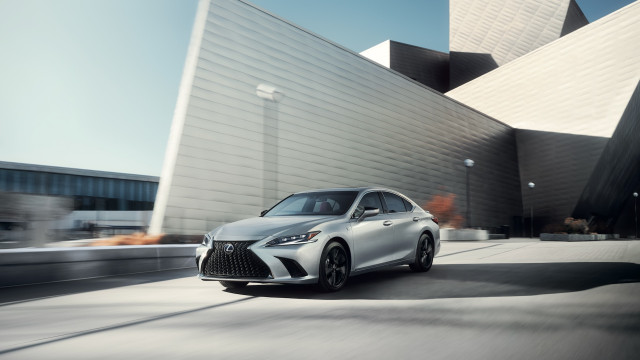
2023 Lexus ES

2023 Lexus ES
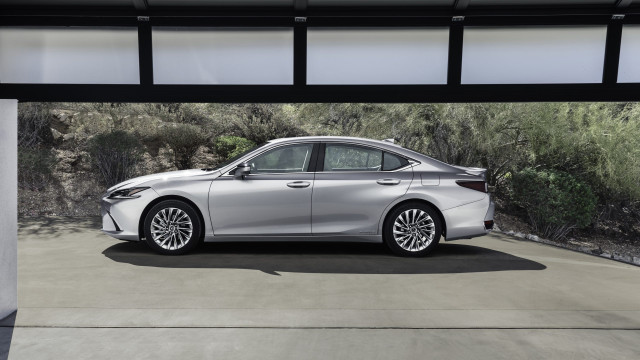
2023 Lexus ES
TLX vs. ES fuel economy
With the base engine, the TLX is rated at 22 mpg city, 31 highway, 25 combined with front-wheel drive, or 21/29/24 mpg with all-wheel drive. The front-drive A-Spec model is rated at 22/30/25 mpg, but the all-wheel-drive version has no fuel economy penalty, according to the EPA.
The more powerful TLX Type S gets 19/25/21 mpg on its standard tires and 19/24/21 mpg on the available summer performance tires.
The Lexus ES is more efficient across the board. The ES 250 is EPA-rated at 25/34/28 mpg. The ES 350 gets 22/32/26 mpg in most versions, but the F Sport models get 22/31/25 mpg.
At the top of the heap is the ES 300h hybrid, which posts EPA ratings of 43/44/44 mpg, impressive for a mid-size sedan.
Advantage: Lexus ES.
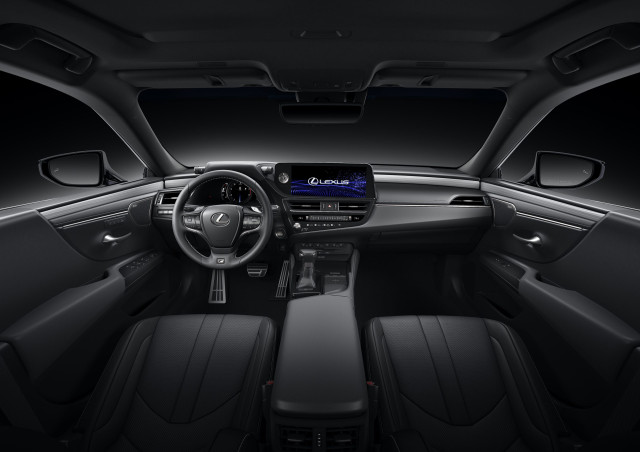
2023 Lexus ES
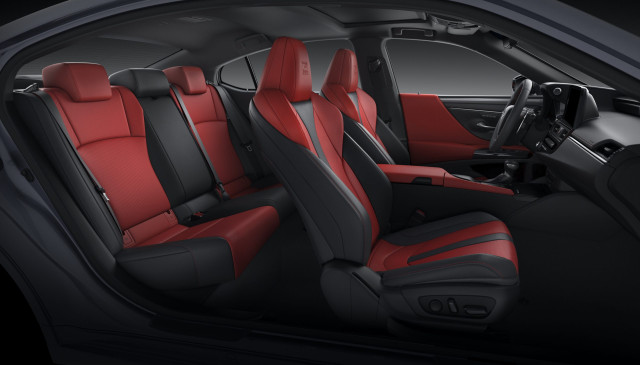
2023 Lexus ES
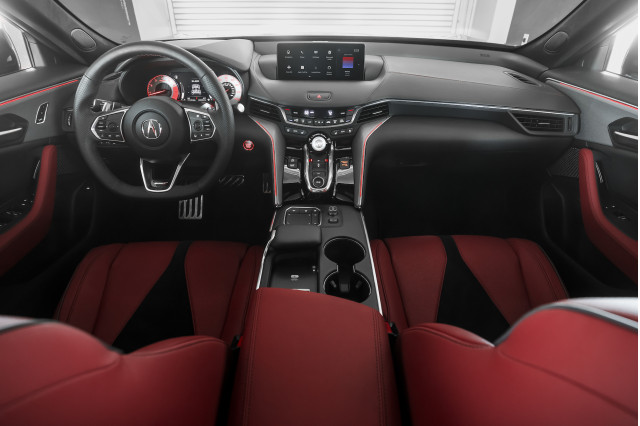
2023 Acura TLX
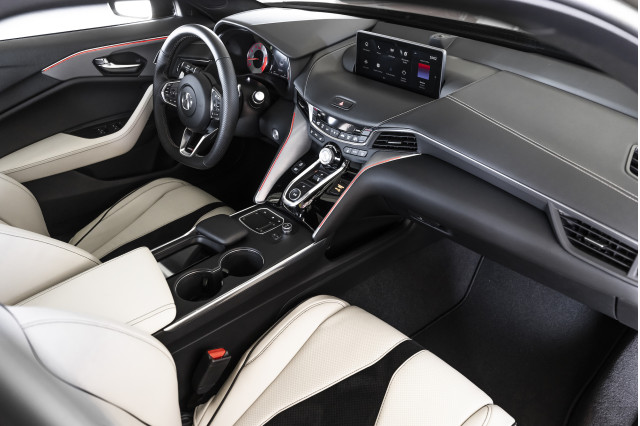
2023 Acura TLX
TLX vs. ES space, cargo, and dimensions
ES is longer
TLX is wider
ES has more rear legroom
How big is the Acura TLX?
The TLX spreads its length over 194.6 inches on a 113.0-inch wheelbase. It’s 75.2 inches wide and seats five.
Front seat occupants get heated sport seats with more bolstering than in the ES, 12-way power-adjustments, and heating. Synthetic leather upholstery is standard, but rich Milano leather is available.
Rear seat occupants have only a decent 34.9 inches of legroom, which limits space to stretch out.
The trunk has a decent 13.5 cubic feet of cargo volume that is made more useful by fold-down rear seats.
How big is the Lexus ES?
The ES gets the same 113.0-inch wheelbase as the TLX, but it’s slightly longer at 195.9 inches. However, it’s slightly skinnier at 73.4 inches wide, and it also seats five.
Synthetic leather upholstery comes standard but soft semi-aniline leather is available, and every ES has 10-way power-adjustable front seats. Those seats aren’t very thickly bolstered, except in F Sport models, but they are quite comfortable and fine.
The rear seat has a spacious 39.2 inches of legroom, and while three will fit across back there, the TLX’s wider body would make them more comfortable. Trunk space in the ES is slightly better at 13.9 cubic feet, but the rear seats don’t fold down to fit longer items.
Advantage: It’s a draw as the ES has more legroom but the TLX has a fold-down second row.

2023 Lexus ES
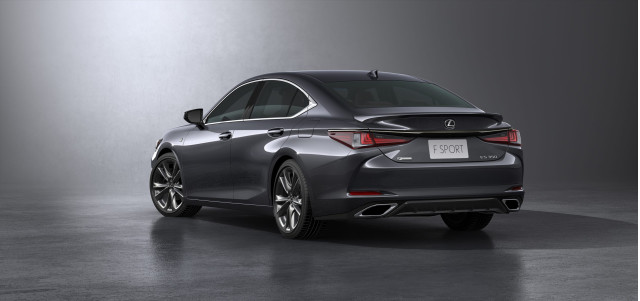
2023 Lexus ES
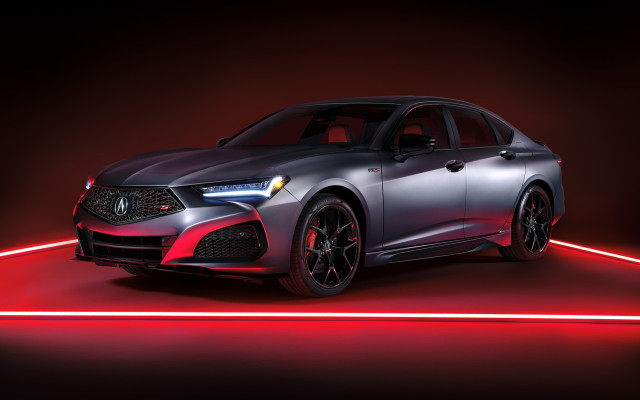
2023 Acura TLX Type S PMC Edition
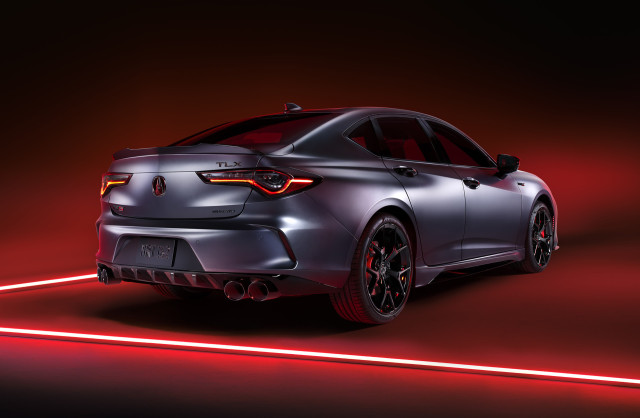
2023 Acura TLX Type S PMC Edition
TLX vs. ES styling
TLX looks sportier
ES is more understated
High-quality interiors
The Acura TLX sports a low-slung body that flows back from a shield-shaped grille and makes a statement that this is a sport sedan. The grille itself imparts a sense of motion with the Acura logo in the center and what look like speed lines surrounding it. Slim headlights rise from the grille, which is also reflected in a lower air intake, and the effect is that of an evil grin. Air intakes sit below the headlights to finish off the face.
The profile isn’t as complex, but a rising character line from the front wheels to the taillights gives the car a visual rake, and a lower character line tucks in at the hips to add to the athletic stance. The taillights wrap into the fenders and have rounded elements that make them look like squinting eyes. A-Spec and Type S models come with a body kit that only accentuates the low stance.
Inside, the TLX comes off as sportier, techy, and busy. The infotainment screen rises from the dash over a chunky center stack highlighted by an aluminum drive mode selector. The infotainment system requires a trackpad with a stitched handrest behind it. Leather, contrast stitching, and metallic trim provide the upscale look, and the available red upholstery adds more visual interest and a distinctive sporty flair.
The Lexus ES also has a sporty vibe, but it’s more subtle. The body seems to drape over the chassis, getting wider at the middle, and the roofline extends far into the trunk, almost like a liftback.
Up front, the low nose is dominated by a wide, but smooth version of the Lexus “spindle” grille. Slim, triangular headlights flank the grille, and they are reflected in lower air intakes with chrome trim strips that look like whiskers on this face.
Rounded, organic shapes define the flanks in a simple, attractive design. The rear end has more going on, as the taillights and body lines draw in toward the middle of the car. It’s finished with a built-in trunk spoiler, full-width chrome trim top and bottom, and outboard exhaust outlets.
The cabin has a two-tier dash topped with either an 8.0-inch or 12.3-inch infotainment screen. The design focuses the controls on the driver, and the drive mode selector sticks out of the side of the instrument panel hood as a rotating dial. High quality, soft-touch materials provide a sense of warmth, which is aided by the available earth-tone colors.
Advantage: Acura TLX.

2023 Lexus ES
TLX vs. ES safety
Both earn IIHS Top Safety Pick+ awards
Both gets five stars from the NHTSA
Lexus AEB has pedestrian detection
How safe is the Acura TLX?
Both cars earn the top safety scores available. They get five stars overall from the NHTSA and qualify for the IIHS’s Top Safety Pick+ award.
Both also have good outward vision. The difference is in the standard safety equipment, and that’s very little. The TLX comes standard with automatic emergency braking, adaptive cruise control, active lane control, and automatic high-beams. Blind-spot monitors are added with the Technology package and any other package.
How safe is the Lexus ES?
The Lexus ES has automatic emergency braking with pedestrian detection, blind-spot monitors, rear cross-traffic alerts, active lane control, automatic high-beams, traffic sign recognition, and adaptive cruise control. Also offered are a surround-view camera system and parking sensors.
Advantage: Lexus ES for slightly better standard safety features.
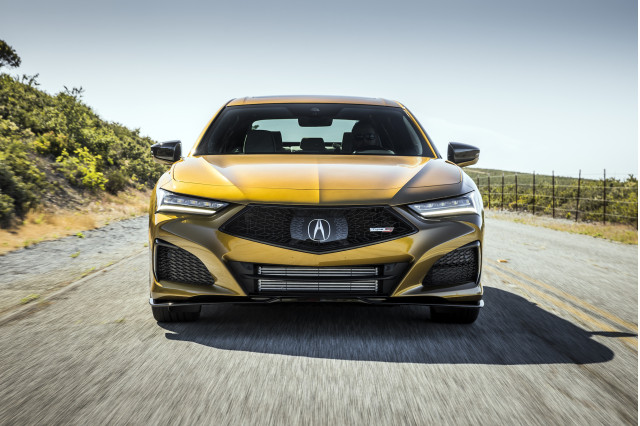
2023 Acura TLX
Which is better: TLX or ES?
These are both excellent daily drivers that accommodate five passengers in luxury and comfort. They both earn a TCC Rating of 7.2 out of 10, and we recommend both. (Read more about how we rate cars.)
The choice here is a matter of priorities. The TLX gets our nod as the better looking car, and its Type S is more fun to drive model in this comparison. However, the ES is more efficient and it has slightly better safety equipment. Anyone interested in this duo should decide what matters most to them, and drive both cars first to see which feels best. Either way, you’ll get a winner.














